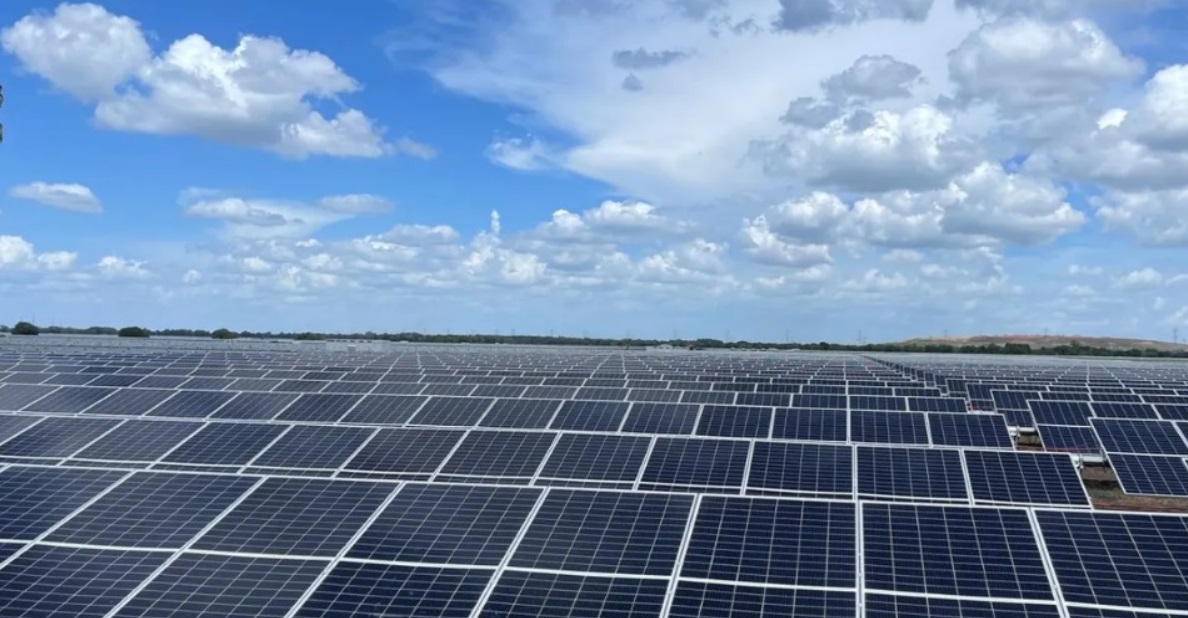|
|
|
HAPPY FRIDAY
September 27, 2024
|
|
|
|
Welcome to Energy Right’s weekly roundup! This week our team went to over half a dozen different
counties on our mission for
Clean Energy the Right Way.
|
|
|
|
|
|
Hurricane Season Highlights Need for a Resilient U.S. Power Grid
|
 |
|
|
|
As Hurricane Helene approaches the coast, each state dealing with these emergency weather patterns will begin to have their grid reliability tested. During emergencies, a reliable and efficient power grid is not just a convenience but a lifeline for communities weathering the storm and rebuilding in its aftermath. Many Americans, unfortunately, face uncertainties when these disasters strike, wondering if or when their power will be cut off, like the winter storms in Texas this past year. This vulnerability can be addressed through strategic investment in renewable energy projects, and the problem of a reliable grid can be proactively secured. By utilizing resources through well-planned
renewable energy initiatives, we can significantly reinforce our grid’s resilience.
Renewable energy projects diversify the nation’s energy mix, leading to more predictable rates for consumers and increased grid stability. By incorporating various energy sources, the grid becomes less vulnerable to disruptions in any single sector. Additionally, new renewable energy installations often come with upgrades to aging grid infrastructure and technology, strengthening the overall grid system and reducing the likelihood of blackouts during extreme weather events. Expanding domestic renewable energy production moves the nation towards greater energy independence and security, reducing reliance on external sources and enhancing our ability to meet energy demands during crises.
In order to achieve these energy goals, we must support the permitting process for responsible renewable energy projects, invest in grid modernization to accommodate new energy sources, encourage the development of energy storage solutions to balance supply/demand, and promote policies that incentivize grid reliability alongside renewable energy integration. All of that is to say: support for projects at a local level go a long way. By embracing these strategies, we begin steps forward that can create a better power grid that Americans depend on, even in the face of extreme weather events.
You can read more about grid reliability and renewable energy here with information from the American Clean Power Association.
|
|
|
|
|
|
|
|
|
|
|
|
Supporting Pollinators and Renewable Energy: A Dual-Use Approach
|
|
|
|
|
We’re excited to share the recently released Guidelines for Developing Pollinator-Friendly Utility-Scale Solar Projects by the Honey Bee Health Coalition. This guide serves as a valuable resource for integrating pollinator habitats into solar developments, promoting responsible land use that aligns with our conservative values. By establishing pollinator-friendly environments on solar sites, we can not only generate clean energy but also enhance biodiversity, benefiting our vital agricultural industry. Projects that take into account multiple infrastructures, like agrivoltaics, often have higher capabilities when utilizing land.
As utility-scale solar projects expand, the potential to create dual-use landscapes is more important than ever. Incorporating pollinator habitats can support honeybees and native species essential for crop production that would otherwise be missing, directly benefiting farmers and orchards across our state. Embracing these guidelines allows us to champion sustainable practices that preserve our agricultural heritage while advancing renewable energy initiatives. Let’s work together to promote these beneficial practices in our communities for a brighter, more sustainable future.
|
|
|
|
|
|
|
|
|
|
|
|
This week, our team travelled to:
Brunswick, Chesterfield, Hanover, James City, King William, Lunenburg, Roanoke
counties as well as Roanoke City
|
|
|
|
|
|
|
|
|
|
This week, Energy Right team member Dylan Taylor visited with Brunswick County at CEP’s
Bright Leaf Solar open house. Discussions and the multiple perspectives that go into reviewing projects or possible solar initiatives lay the groundwork for successful planning.
|
|
|
|
|
|
|
|
Guidebook Supports Pollinator-Friendly Utility-Scale Solar Projects
Morning AgClips
|
|
The Honey Bee Health Coalition has released a new guidebook aimed at integrating pollinator-friendly habitats into utility-scale solar (USS) projects. As the U.S. transitions to renewable energy, over 10 million acres of USS projects are expected by 2033, offering a unique opportunity to support pollinator health. The guide provides best practices for site preparation, seed mix design, and habitat management to enhance biodiversity. Pollinators, like honeybees, play a crucial role in U.S. agriculture, benefiting over 140 crops. This initiative supports both renewable energy goals and the conservation of pollinator habitats.
|
|
|
|
|
|
|
|
|
|
NEXT WEEK
We’ll be going to Brunswick, Fluvanna, Giles, Lunenburg, Russell, and Surrey counties.
Have a great weekend!
|
|
|
|
|
|
|
|
|
|
“BEDFORD COUNTY, Va. (WSET) — The first Virginian solar panel manufacturer is set to open in
Bedford County, bringing new life to a long-vacant facility.
The new Solarix plant, located in Forest off Perrowville Road, occupies the former Teva Pharmaceutical facility, which has been empty for three years. The site, nearly half a million square feet, is currently undergoing significant electrical upgrades in preparation for the project.”
|
|
|
|
|
|
|












